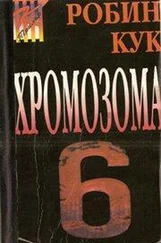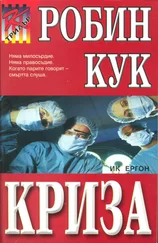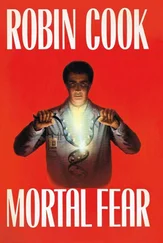“Okay,” Sana said. “But why would the Zealots and the Essenes plot to steal the body of the Virgin Mary? That doesn’t make sense to me.”
“Saturninus doesn’t say specifically, but here’s what I think he is implying. When the Virgin Mary died in AD 62 as he says and was entombed in a cave on the Mount of Olives, perhaps even where her tomb is supposed to be today, some Zealots, probably the Sicarii, saw an opportunity to fan the fires of hatred of the Romans toward the Jews. What they were trying to do was start a revolt, and they didn’t care which side was the instigator. Prior to that, the Sicarii had mostly concentrated on intensifying the hatred of the Jews toward the Romans, which is why they spent most of their time and energy assassinating those Jews who they thought were collaborating with or even just soft on the Romans. The rationale was to get the Jews to start the fight.
“Then the death of Mary offered something else. It offered an opportunity to put Roman frustration with the problem of religious strife over the top. You see, at that time in the mid-first century, Jews who had become followers of Jesus of Nazareth were considered Jews and not yet a new religion. Yet they didn’t get along with traditional Jews. In fact, they were constantly at each others’ throats over what the Romans considered ridiculously petty issues. On top of that, there was infighting among the Jewish Christians. It was pure religious anarchy, and the Romans were fit to be tied.”
“I still cannot understand the Virgin Mary’s role in all this.”
“Think of the Romans’ frustration. Saturninus mentions that the Romans thought they had taken care of the Jesus of Nazareth problem by crucifying Jesus. But they were wrong, because Jesus didn’t stay dead like all the other crucified supposed messiahs of the time, of which there were a number. Jesus came back in three days, which ended up, in retrospect, magnifying the problem rather than ending it. Saturninus implies that the Zealots counted on Mary’s disappearance in three days after her death to suggest that she too had defied death and had joined her son, reconfirming Jesus’ mission. The Zealots and the Sicarii stole the body of the Virgin, specifically on the third day, in the hope of terrifying the Romans into believing that there was possibly going to be another serious flare-up of religious fervor as followed Jesus’ resurrection, forcing them to crack down to prevent it. The idea was that a crackdown in such a tense environment would cause a cycle of violence, which would cause a harsher crackdown, and so on. As Saturninus mentions, he didn’t know if it was the disappearance of Mary’s body that did the trick, but soon after its theft, a cycle of violence did occur that grew progressively month by month. Within just a few years the tinderbox that was Palestine exploded into the climactic Great Revolt, with all the Jews uniting together to seize both Jerusalem and Masada from the Romans.”
“Do you think it would have been easy to steal the body of the Virgin?”
“Actually, I think it would have been. There seems to have been a surprising lack of interest in the Virgin Mary after the crucifixion, so that her death, according to Saturninus, in AD 62, drew little or no attention. None of the four Evangelists mentions much about her after Jesus’ death and resurrection, and Paul gives no indication whatsoever of a special place for her in the early Church. In fact, he mentions her only once in Galatians, and that was fleetingly, without even using her name. It wasn’t until toward the end of the first century that Mary began getting more recognition. Today there is no question of her importance, which is why I believe this letter is so significant.”
“I didn’t get the impression from Saturninus’s letter that Simon Magus had any connection with the initial theft of Mary’s remains.”
“Nor did I. My sense is that his interest was driven by his desire to secure for himself the curative power related to Jesus of Nazareth, and he didn’t share the political interests of the Zealots. Saturninus doesn’t mention how Simon learned that the Essenes had hidden the body in one of the Qumran caves, nor does he say how he managed to gain control of the bones. Perhaps by then no one cared. Simon was disappointed the remains didn’t have the power to heal, which was obviously his reason to gain possession of them, and it was only after the fact that he got the idea to follow Peter, first to Antioch, and then Rome, with the plan to trade them for Peter’s curative power.”
“But Peter rebuffed him again.”
“Apparently so, and according to Saturninus, with equal passion as when he had offered silver.”
“Why do you think Saturninus and Menander decided to bury Mary’s bones with Peter?”
“I believe for the reason he states in the letter. They were both impressed with Peter’s ability to cure by laying on of hands. We know they were impressed, since ultimately both became Christians, and Saturninus became a bishop of a major Roman city.”
“I wonder what happened to Simon’s remains. It would have been ironic if they ended up with Peter as well.”
“Indeed,” Shawn said with a smile. “But I doubt it sincerely. Saturninus surely would have said if he and Menander had done it.”
“So, what are your plans?” Sana questioned. “Let me guess. You want to go to Rome and see if this ossuary Saturninus described is where he said he and Menander put it?”
“Exactly,” Shawn said eagerly. “Apparently, just around the time Simon died during his attempt to rise up to heaven, Peter must have been martyred. With Peter’s followers building him an underground tomb, Saturninus and Menander would have had a convenient opportunity to join Mary’s ossuary with one of her son’s closest apostles. Frankly, I think it was a very respectful gesture on their part, and it certainly suggests that they at least held Mary in high regard.”
“I didn’t understand the part of the letter describing where they put it,” Sana said. “Do you?”
“I do. The tomb was a barrel vault, comprised of two parallel foundation walls holding up a vault. To build such a tomb, a rather large hole has to be excavated so that the walls can be put up. Saturninus says that they placed the ossuary at the base of the north wall outside of the tomb, approximately in the middle, and covered it with dirt. That is consistent with the facts, because the foundation walls of Peter’s tomb run east-west.
“Why did they put the ossuary outside the tomb, rather than inside with Peter?”
“Obviously, they had to hide the damn thing outside,” Shawn said impatiently, as if he thought Sana’s question was inane. “They were doing this sub rosa, so to speak, without anyone else’s knowledge.”
“Don’t be condescending!” Sana snapped. “I’m doing my best trying to understand it all.”
“Sorry,” Shawn said, realizing that if he wanted her to come, he had to be patient. “Getting back to the ossuary’s placement, I have to tell you that it is unbelievably serendipitous for us for two reasons: First, I don’t think that area of the tomb has ever been touched; second, the last time the tomb was excavated, which was in the nineteen-fifties, the archaeological team actually tunneled under the area, probably passing beneath Mary’s ossuary, to reach the inside of the tomb. What that means is that all we will have to do, at most, is remove maybe a few inches of packed debris and the ossuary will drop down into our waiting hands.”
“You make it sound so easy.”
“I think it will be. Just before you got here I was on the phone with my assistant, Claire Dupree, back at the Metropolitan. I’m having her overnight my file on Saint Peter’s tomb to the Hassler in Rome. I still have the access permit to the necropolis under Saint Peter’s Basilica from the Pontifical Commission for Sacred Archaeology, which James arranged directly through Pope John Paul II. The file also contains my Vatican ID card, and most important, the key for the Scavi, or excavation office, which is the same as to the site itself.”
Читать дальше












